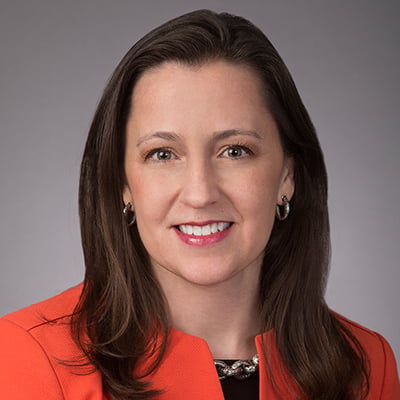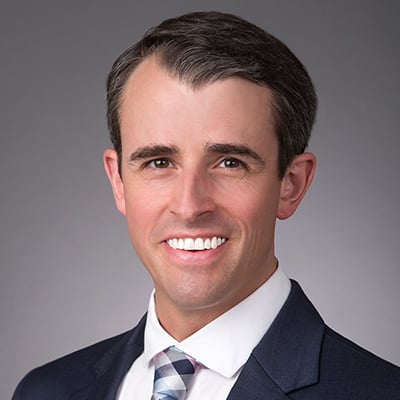FERC Order Revokes Solar Facility's QF Status
On May 13, 2022, the Federal Energy Regulatory Commission (“FERC” or the “Commission”) issued an order (“Order”) revoking the qualifying small power production facility (“QF”) status of Dalreed Solar LLC (“Dalreed Solar”).1 The Order arose after the interconnecting utility, Portland General Electric Company (“PGE”), protested Dalreed Solar’s January 2022 Form No. 556 self-recertification (“2022 Recertification”), arguing that Dalreed Solar’s facility was located at the same site as two other, affiliated QFs, which each comprised 80 MW net power production capacity, and thus exceeded the 80 megawatt (“MW”) statutory limit for QFs.
FERC has provided very little guidance to QF owners as to how the agency will evaluate contested Form No. 556 self-certifications, and it is rare for FERC to revoke a QF’s status, so the Order provides important guidance to owners of development-stage and operational QFs, such as owners of large portfolios of renewable projects who rely on QF status for certain exemptions or benefits. In particular, the Order sheds light on FERC’s analysis of: (1) what constitutes a “substantive change” that can give rise to a third-party right to protest a QF recertification; and (2) when projects are considered to be at the “same site” such that they must be aggregated (and potentially run afoul of the 80 MW statutory limit).
Background
Under the Public Utility Regulatory Policies Act of 1978 (“PURPA”), QFs and their owners enjoy certain rate and regulatory benefits relied on by many owners of renewable generation portfolios.2 To obtain QF status, the operator of the facility must file a notice of self-certification (Form No. 556). In June 2020, Dalreed Solar filed a Form No. 556 self-certification for a 40 MW net power production capacity solar facility in Gilman County, Oregon and listed Pacific Power & Light as the interconnecting utility. In 2021, Dalreed Solar filed an updated Form No. 556 for self-recertification of the facility, reducing the facility’s net power production capacity from 40 MW to 20 MW. Then, in January 2022, Dalreed Solar filed the 2022 Recertification, changing the interconnecting utility to PGE and increasing the net power production capacity from 20 MW to 40 MW.
After Dalreed Solar filed the 2022 Recertification, PGE filed a motion to intervene and protest, arguing the Dalreed Solar’s QF status should be revoked because the facility was located at the “same site” as two affiliated QFs, and thus the total net power production capacity, including Dalreed Solar, exceeded the 80 MW statutory limit for QFs.
FERC Clarifies What Constitutes Substantive Change for Qualifying Facility Protest
In July 2020, the Commission issued Order No. 872, which amended FERC’s regulations to allow an interested person or entity to intervene or file a protest of a Form No. 556 self-certification or self-recertification making a “substantive change” to QF status without having to pay a filing fee or seek a declaratory order.3 At the outset of the Order, the Commission addressed PGE’s standing to intervene and file a protest to the 2022 Recertification. The Commission explained that PGE was a proper interested person because PGE would serve as the interconnecting utility for both Dalreed Solar and the two affiliated QFs under the 2022 Recertification.4 Then, the Commission rejected three separate arguments made by Dalreed Solar related to the substantive change analysis and the applicability of Order No. 872.
First, Dalreed Solar argued that the proposed capacity increase for their facility was a mere “administrative change” and not a “substantive change” subject to protest.5 However, the Commission noted that Order No. 872’s examples of substantive change included “change[s] in electrical generating equipment that increase[] power production capacity by the greater of 1 MW or 5 percent of the previously certified capacity.”6 The 2022 Recertification indicated that the facility would have a 40 MW peak power production capacity, while the 2021 recertification listed a peak power production capacity of 20 MW.7 According to the Commission, this 100% increase to Dalreed Solar’s peak power production capacity represented a substantive change subject to protest.8
Second, the Commission rejected Dalreed Solar’s argument that there was no “substantive change” because Dalreed Solar’s original certification provided for 40 MW peak power production capacity.9 As noted by the Commission, 18 C.F.R § 292.207(c)(1) specifies that substantive change relates to the existing certification, and thus Dalreed Solar’s peak power production capacity figures from the original 2020 certification were not relevant.10
Third, the Commission rejected Dalreed Solar’s contention that the facility should be grandfathered under the pre-Order No. 872 rules because Dalreed Solar initially self-certified as a QF in June 2020 (before issuance of Order No. 872 in July 2020).11 The Commission noted that Order No. 872 applies to all Form No. 556 certifications and recertifications after July 2020, and thus Dalreed Solar’s 2021 and 2022 recertifications were subject to these new rules.12
FERC Provides Guidance on Relevant Factors for QF Same Site Analysis
PURPA limits QF status to facilities which individually or together with facilities located on the “same site” have a production capacity of 80 MW.13 The statute expressly provides FERC authority to determine what constitutes the “same site,” and FERC’s regulations use three geographic benchmarks for the same site analysis: (1) there is an irrebuttable presumption that affiliated QFs using the same energy resource and located within one mile of each other are at the “same site;” (2) there is an irrebuttable presumption that affiliated QFs using the same energy resource and located 10 miles or more apart are at “separate sites;” and (3) there is a rebuttable presumption that affiliated QFs using the same energy resource and more than one mile, but less than 10 miles, apart are located at “separate sites.”14
The Commission next addressed whether Dalreed Solar’s facility was located on the “same site” as the affiliated QFs.15 Dalreed Solar’s 2022 Recertification identified two affiliated solar QFs located 1.75 and 6.26 miles from the Dalreed Solar facility.16 Thus, the Commission applied the rebuttable separate site presumption analysis. PGE challenged this rebuttable presumption. Importantly, since both of the affiliated QFs had a net power capacity of 80 MW, classifying either facility as located at the “same site” as Dalreed Solar’s facility would make Dalreed Solar ineligible for QF status.
In determining that Dalreed Solar and the affiliated QFs were at the “same site,” the Commission relied on several factors it previously articulated in Order No. 872 as relevant to the “same site” analysis, including: physical characteristics (e.g., common energy source or shared infrastructure), and ownership characteristics (e.g., common funding sources, facility owners, facility operators, or operational timeline).17
For common physical characteristics, the Commission explained that Dalreed Solar’s facility shared a common energy resource, solar energy, with the two affiliated QFs.18 Likewise, Dalreed Solar and the affiliated QFs shared an interconnection point and infrastructure equipment like busses, step-up transformers, and relays. Dalreed Solar attempted to distinguish its facility from the affiliate QFs because Dalreed Solar had earlier agreed to an individual interconnection agreement with another utility. However, the Commission reasoned that the current interconnection plan with PGE was the most relevant for the same site analysis.19 Dalreed Solar also cited the fact that its facility fell within a different county with different land permitting requirements than the affiliates.20 The Commission discounted this fact, stating that Order No. 872’s relevant factors include physical proximity within ten miles and connected physical characteristics, regardless whether adjacent counties have different permitting requirements.21
For the common ownership characteristics, the Commission explained that the owner and operator of Dalreed Solar’s facility, Energy of Utah, also served as the owner and operator of both affiliated facilities.22 Dalreed Solar argued that in the future there may be a different owner/operator of each facility. The Commission responded that only the 2022 Recertification was before the Commission, and under the facts of that recertification, the facility was under common ownership with the affiliated QFs. The Commission also disagreed that it could conditionally affirm QF status for the facility based on one of the factors changing before the facility reaches commercial operation.
Importantly, the Commission reiterated that the “same site” analysis is a case-by-case evaluation, and all Form No. 556 certifications and recertifications should look to the factors listed in Order No. 872 as relevant.23 The Commission also noted that if the circumstances underlying the Commission’s findings changed such that, for example, Dalreed Solar were no longer affiliated with the affiliated QFs, the facility could seek to re-file for QF status.
Finally, Dalreed Solar alternatively claimed that good cause existed for a waiver from FERC’s regulations for calculating maximum output of the facility for purposes of the 80 MW limit for QF status.24 In a previous order, the Commission granted a waiver for a windfarm located within ten miles of two adjacent windfarms because of unique topography where each windfarm is located on a separate and distinct ridge where wind power was most concentrated.25 However, the Commission explained that there was no unique topography or other physical characteristics in north central Oregon to justify a waiver for Dalreed Solar’s facility.26
Key Takeaways
For owners of QFs, especially those that are under development, there are some key points to highlight from the Order:
- When a QF owner files a self-recertification, the analysis of whether there is a substantive change will be with respect to the existing certification (even if the change returns the project’s characteristics to those described in an earlier version of the Form No. 556).
- FERC will analyze the facts before it at the time that a Form No. 556 is protested. Thus, QFs under common ownership will be considered affiliates, without regard to whether the QF project owner intends to sell off assets further along in the development process.
- As a result of the above, for portfolios involving QFs that will rely on a PURPA contract or other benefits of QF status, project developers should attempt to ensure that QFs located within 10 miles of each other do not in the aggregate exceed 80 MW, or should attempt to maximize the physical and ownership characteristics that demonstrate that the projects are separate facilities.
*Summer associate Nicholas Rinehart provided valuable research and drafting assistance in support of this post.
1. Dalreed Solar LLC, 179 FERC ¶ 61,105 (2022) (“Dalreed Solar”).↩
2. See Brooksany Barrowes et al., FERC Reinforces Importance of Qualifying Facility Recertification, Kirkland & Ellis Energy & Infrastructure Blog (Apr. 8, 2022), https://www.kirkland.com/publications/blog-post/2022/04/ferc-qualifying-facility-recertification (highlighting certain benefits of QF status).↩
3. 18 C.F.R. § 292.207(c)(1)-(2) (2022).↩
4. Dalreed Solar at P 50.↩
5. Id. at P 17.↩
6. Id. at P 49 (quoting Order No. 872 at P 550).↩
7. Id. at P 50.↩
8. Id. ↩
9. Id. at P 51.↩
10. Id. ↩
11. Id. at P 52.↩
12. Id.↩
13. 16 U.S.C. § 796(17) (2018).↩
14. 18 C.F.R. § 292.204(a)(2). This provision provides a separate proximity rule for hydropower QFs.↩
15. Dalreed Solar at P 54.↩
16. Id. at P 5.↩
17. See id. at PP 13-16.↩
18. Id. at P 56.↩
19. Id. at P 57.↩
20. Id. at P 60.↩
21. Id. ↩
22. Id. at PP 56, 57.↩
23. Id. at P 62.↩
24. See 18 C.F.R. § 292.204(a)(3).↩
25. Dalreed Solar at P 64.↩
26. Id.↩
- Read all insights from the Energy & Infrastructure Blog.
- Read more Energy Regulatory insights.
- Subscribe to receive future updates.
This publication may cite to published materials from third parties that have already been placed on the public record. The citation to such previously published material, including by use of “hyperlinks,” is not, in any way, an endorsement or adoption of these third-party statements by Kirkland & Ellis LLP.




